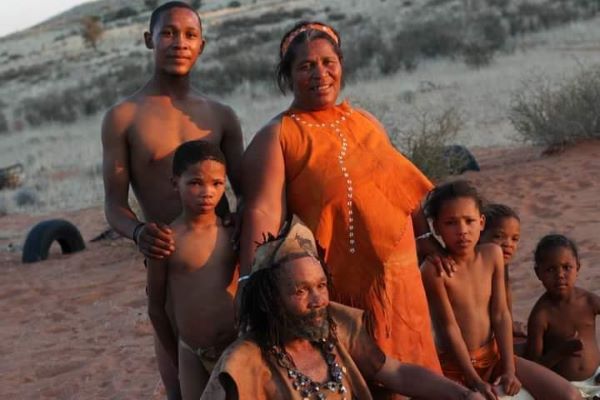The objectives of the land reform programme and nature conversation may, at face value, seem disparate. However, the return of the disputed 45 000-hectare tract of land located in the Kgalagadi National Park in the Northern Cape to the Khomani SAN community provides invaluable lessons on how to strike a delicate balance between promoting nature conservation and correcting past injustices that arose from forced land removals.
The Khomani San community are located in the Kgalakgadi Transfrontier Park and surrounds and own 45 000 ha of land within the Kgalagadi Transfrontier Park and six farms south of the park totalling about 370 000 ha. The park is a World Heritage Site (WHS).
The Vumelana Advisory Fund a non-profit organisation that facilitates partnerships between land reform beneficiaries and private partners played a key role in ensuring that the post-settlement agreement with SANParks, the conservation custodian of the land, was implemented fairly and that the indigenous Bushman inhabitants have unrestricted access to the national park to practice their customs while contributing to the conservation efforts.
The post-settlement support that Vumelana Advisory Fund provided for the community is but one of the many interventions the organisation has undertaken to facilitate sustainable partnerships between claimant communities and private sector investors to drive the productive use of land and ensure the long-term financial viability of the land enterprise.
Speaking about the partnership between the Khomani SAN CPA and SANParks, Dirk Pienaar, the Tourism and Conservation Officer of the Khomani San CPA says, “As part of this partnership, the Khomani SAN community, working together with SANParks is currently developing a 28-bed lodge, named after the late David Kruiper, one of the leaders who were instrumental in the community’s land claim.”
The community anticipates that the David Kruiper Lodge will play an important role in revitalising the local economies and supporting emerging businesses in a desolate area that is far removed from mainstream economic opportunities.
It is envisaged that the Lodge will employ at least 8 permanent employees and create additional part-time jobs. The lodge is expected to be completed in the first half of 2024.
The community also co-owns a 25-bed four-star lodge on the land named !Xaus Lodge which is owned by Khomani SAN and the Miers Community – who also lodged a claim in the Kgalagadi National Park. !Xaus Lodge currently employs 19 permanent staff members from both the Khomani SAN and Mier communities.
The newly established David Kruiper will service a different market to that of !Xaus Lodge and seeks to create opportunities for economic expansion and access to economic opportunities for the Khomani SAN community.
Pienaar shares that, given that the Kgalagadi National Park is conservation land, the project presented unprecedented and unique challenges and complexities that required deftness and diplomacy to navigate, and with the help of Vumelana’s independent advisory services, the community and SANParks were able to reach an agreement of mutual benefit
“Working with SANParks and the management company, we are able to also support local businesses from the Khomani SAN community, with various entities owned by individuals or small business owners in the area currently providing various services to !Xaus Lodge including beading and craft supplies – which will all continue to grow with the completion of David Kruiper Lodge,” Pienaar says.
“While balancing community and conservation interests may seem extremely challenging, we have found that it’s crucial to involved entities that understand how to navigate these relationships to meet the needs of all stakeholders, and this is an important lesson to the restitution process,” says Pienaar.
“We have really been able to rip some benefits from our land and to be able to speak out about how we want things to run on our land has been truly freeing for our people,” Pienaar says.
According to Pienaar as we look ahead, there is a need to ensure that communities benefit more in leadership and management roles on the businesses that they set up through partnerships on their land; and this is one area that the community is working on improving.
The community has also benefitted from various skill development initiatives and training to equip them with the skills they need to become employable on Khomani SAN-owned facilities and other external facilities.
Pienaar says it’s important to note that the benefits of land reform on conservation land transcend beyond monetary gain, but extend to the intrinsic value, and the pride of ownership, of having free and unrestricted access to the land and in this case to the entire park.
“Our community is known for our close interactions with nature and being traditional healers who use medicinal plants, so access to the park is vital. In addition, we are able to commercialise our culture on our own terms, we decide what we want to commercialise and what parts of our traditions we don’t want to share with tourists – and this is truly what the restitution process should be about – to give back communities the land and their freedoms on their land.”
He adds that the important takeaway from this project is the importance of a bottom-up approach, where the community is consulted every step of the way when it comes to the management of their land.
“When you work with traditional communities you need to start thinking from the bottom up as that’s the only way that you will ensure a process of custodianship that they understand. If you listen to what the community wants, you will be able to work out better project plans and ultimately have fewer unhappy community members,” Pienaar concludes.









